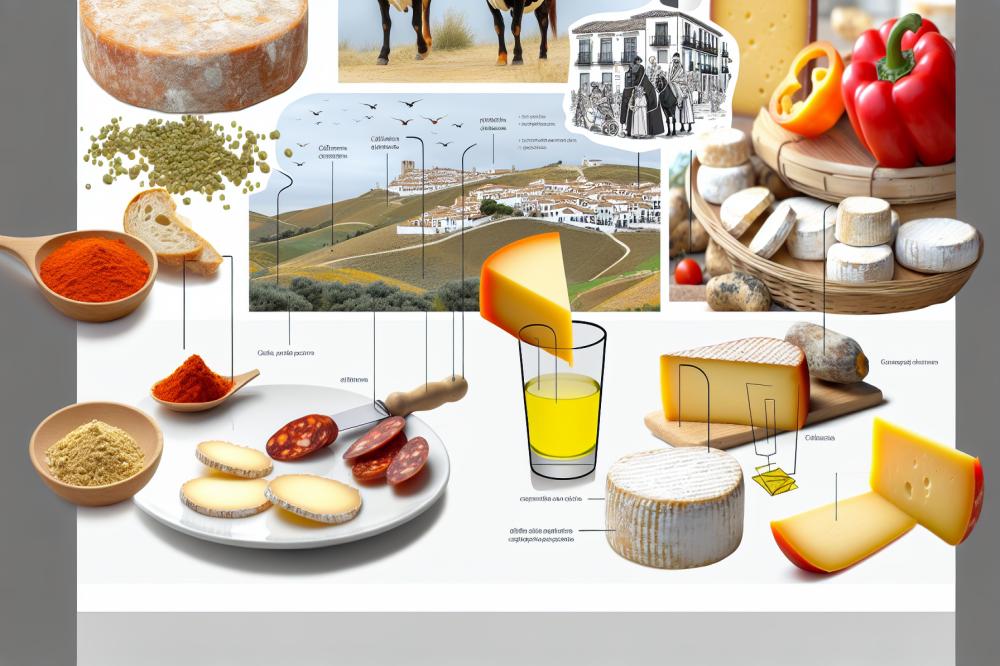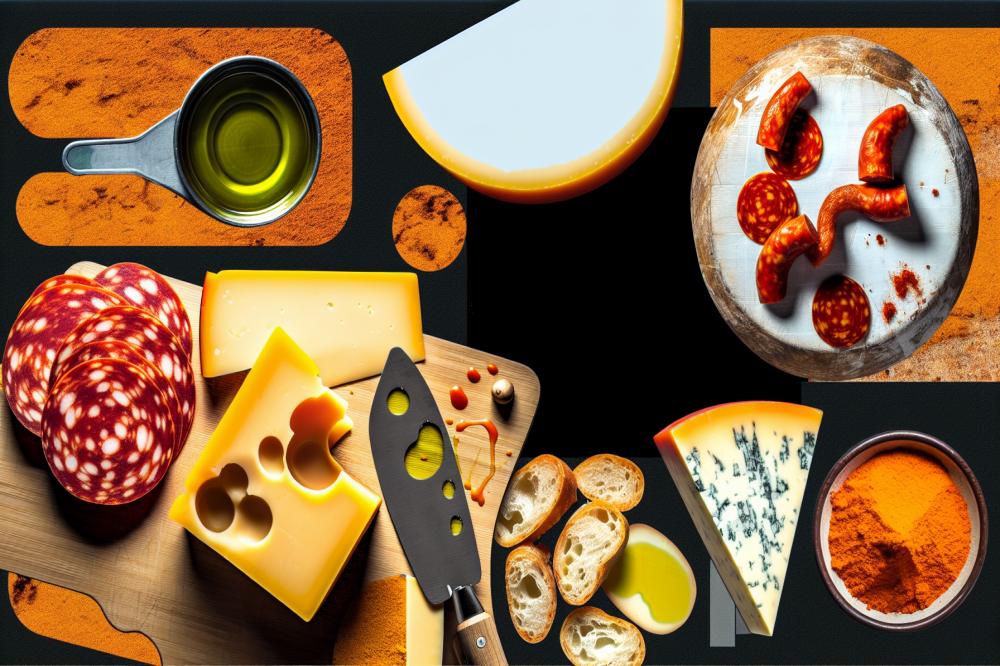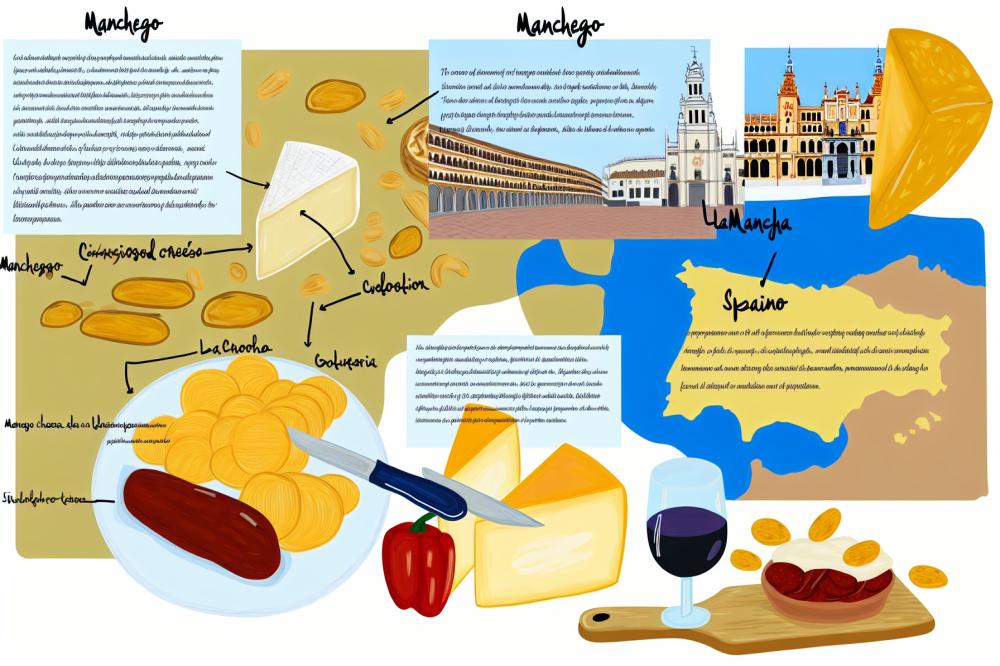Manchego Cheese: The Iconic Cheese of La Mancha
Manchego Cheese stands as a true emblem of Spanish culture. Originating from the rolling plains of La Mancha, this cheese reflects the rich heritage of its region. The land is famous not just for its picturesque landscapes but also for its sheep farming. The milk from the Manchega sheep is the primary ingredient in crafting this delightful cheese.
Many consider this cheese to be one of Spain’s most significant culinary treasures. Whether it is served on a platter or added to a traditional dish, it always adds a touch of flavor. People enjoy it in various forms, from young and creamy to aged and crumbly. Each type offers a different taste experience while maintaining its distinct character.
Flavor profiles vary based on age. A young cheese has a mild and buttery taste, while aged versions deliver a more intense, nutty flavor. The texture can range from smooth to firm, making it versatile for various culinary applications. Its rich taste mingles beautifully with both savory and sweet elements, allowing it to shine in numerous recipes.
This cheese has become a cornerstone in Spanish cuisine. Many enjoy it with wine, making it a perfect companion for gatherings or celebrations. It represents more than just a snack; it symbolizes the history and craftsmanship of the region. Each slice of Manchego Cheese tells a story that connects us to the heart of La Mancha.
Manchego Cheese

This iconic cheese comes from the heart of La Mancha, a region in Spain famous for its rich history and vibrant culture. Several types of this cheese exist, each with distinct flavors and textures. When discussing this cheese, it is essential to recognize the three primary categories: young, cured, and aged. Each type offers a different taste experience that reflects the aging process and the production methods used.
Producers make this cheese from the milk of Manchega sheep. The milk is collected and then carefully processed through traditional techniques. The cheese is formed into wheels and aged in specific conditions. This aging process is crucial in developing the flavor. Young varieties are typically aged for only a few weeks. In contrast, cured and aged cheeses can sit for several months or longer, resulting in a more robust taste.
Flavor Profiles
The flavor of this cheese varies significantly based on its age. Young versions are mild and creamier, often described as buttery and fresh. Cured cheese introduces a nuttier taste. Aged varieties take it a step further, showcasing complex flavors that can include hints of herbs, grass, and even a slight tang. Some may find the aged version somewhat crumbly, which adds to its appeal.
In the wider category of Spanish cheeses, this one stands out. It embodies the spirit of the region with its bold flavors and rich textures. Spain has many types of cheese, but this one reflects both tradition and quality. Whether enjoyed alone or as part of a larger spread, it never fails to impress.
Cooking and Pairing
Cooks often incorporate this cheese in various dishes. It melts beautifully, making it perfect for casseroles, pasta, or even on top of pizzas. However, it can also shine when served simply, paired with fruit, olives, or crusty bread. Its versatility allows it to elevate any simple meal into something special.
Pairing this cheese with the right wine enhances the overall experience. A glass of robust red, like Tempranillo, complements its flavors excellently. Alternatively, a crisp white wine can counterbalance the richness, providing a refreshing contrast. These combinations are sure to delight any cheese lover.
La Mancha

The La Mancha region is located in central Spain. It is known for its rich history and cultural heritage. This area has roots that date back to ancient times. Over the years, it has influenced Spanish art, literature, and food. Don Quixote, the famous character created by Miguel de Cervantes, roamed these plains. Many people still celebrate this literary legacy through festivals and traditions.
Geographically, La Mancha is characterized by vast plains and rolling hills. These features play a crucial role in agriculture. The climate is typically dry and hot, with hot summers and mild winters. Such conditions contribute to the unique flavors found in local cheeses. The sheep that graze on these lands produce milk rich in fat and flavor. This quality is essential for making Manchego.
Moreover, La Mancha is home to diverse agricultural products. Aside from cheese, the region is famous for its wines, especially from the La Mancha Denomination of Origin. Not all cheeses in Spain come from La Mancha, but the region serves as a cornerstone in its cheese-making landscape. Other notable Spanish cheeses, like Cabrales and Idiazabal, also showcase the country’s diverse traditions. However, the limelight often shines on La Mancha due to its prominence in the world of cheese.
This region’s importance cannot be understated. Local artisans continue to practice traditional cheese-making techniques passed down through generations. The commitment to quality and craftsmanship helps maintain La Mancha’s status as a key player in Spain’s cheese industry. The collaboration between farmers and artisans ensures that the legacy of cheese-making remains vibrant and cherished. Each wedge of cheese tells a story of the land, its people, and their devotion to preserving local culture.
Manchego Cheese Recipe: Manchego Cheese and Chorizo Tapas

Here’s a delightful recipe that combines the rich flavors of Manchego cheese with the bold taste of cured chorizo. Perfect for a casual gathering or a cozy night in, this tapas dish is easy to prepare and truly satisfying.
Ingredients
- 200g manchego cheese
- 100g cured chorizo
- Fresh bread slices
- Olive oil
- Paprika (optional)
- Fresh herbs for garnish (optional)
Instructions
- Begin by slicing the Manchego cheese and chorizo into bite-sized pieces.
- Next, arrange these delicious pieces on a serving platter. Make it visually appealing.
- Then, drizzle olive oil generously over the top.
- For an added kick, sprinkle paprika and fresh herbs, if you choose.
- Serve with fresh bread slices on the side. They provide a great option for dipping.
Nutritional Information
Manchego cheese offers various nutritional benefits. A typical serving can provide about 300 calories. It also contains around 20 grams of protein, essential for muscle repair and growth. Fats in the cheese contribute to approximately 25 grams, mostly from healthy sources.
Calcium content is impressive. It supports strong bones and teeth, which is vital for everyone. Probiotic qualities could also be present, promoting gut health. Choosing this cheese could add a touch of elegance to your diet while being mindful of health.
As you indulge in this recipe, you’re not just enjoying the unique flavors but also reaping some health benefits too. So gather your friends, and enjoy this delicious experience together!
A Lasting Impression of La Mancha

Manchego cheese holds a special place in the heart of Spanish cuisine. Its rich taste and creamy texture offer a glimpse into the traditional practices of La Mancha. This cheese is not just a food item; it represents the culture and history of its region. People have crafted it from sheep’s milk for centuries, showcasing the dedication of local artisans.
While enjoying this delicacy, one connects with the landscapes and traditions that shaped it. Pairing it with fruits or serving it on a charcuterie board elevates any gathering. Exploring the versatility of this Spanish cheese in different recipes can result in delightful culinary experiences.
As culinary enthusiasts, we should take the time to discover the flavors of La Mancha. Cooking with this iconic cheese adds depth and character to dishes. Let its distinct taste inspire creativity in your kitchen. When you savor that first bite, you’ll understand why Manchego is celebrated far beyond its origins. Embrace the opportunity to enjoy this cheese and share it with friends and family.
Ultimately, appreciating Manchego cheese is a step towards embracing the rich tapestry of Spanish culinary heritage. So, venture into your local market for this incredible cheese. You will not just delight in its flavor but also celebrate a tradition that has stood the test of time.


